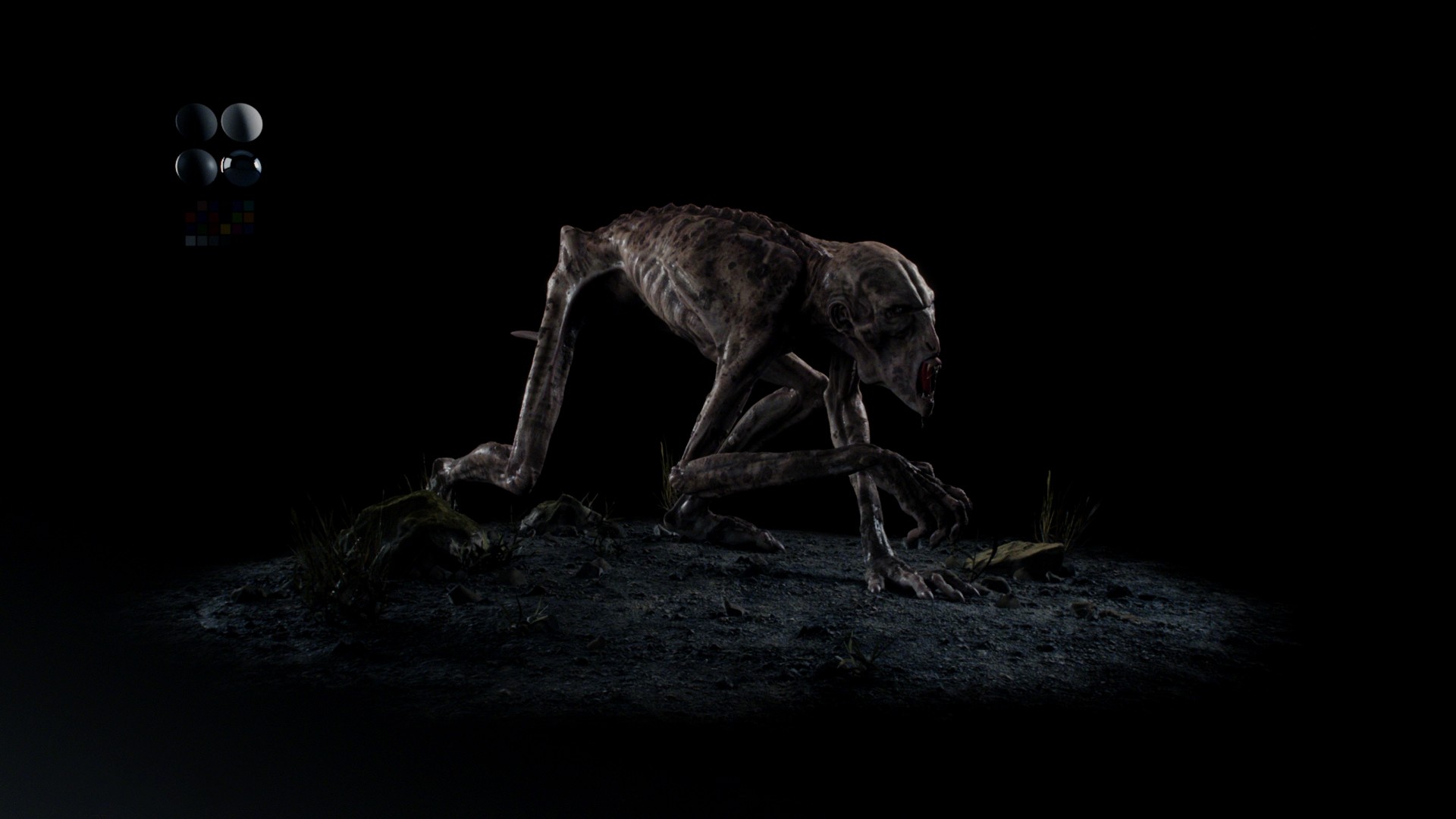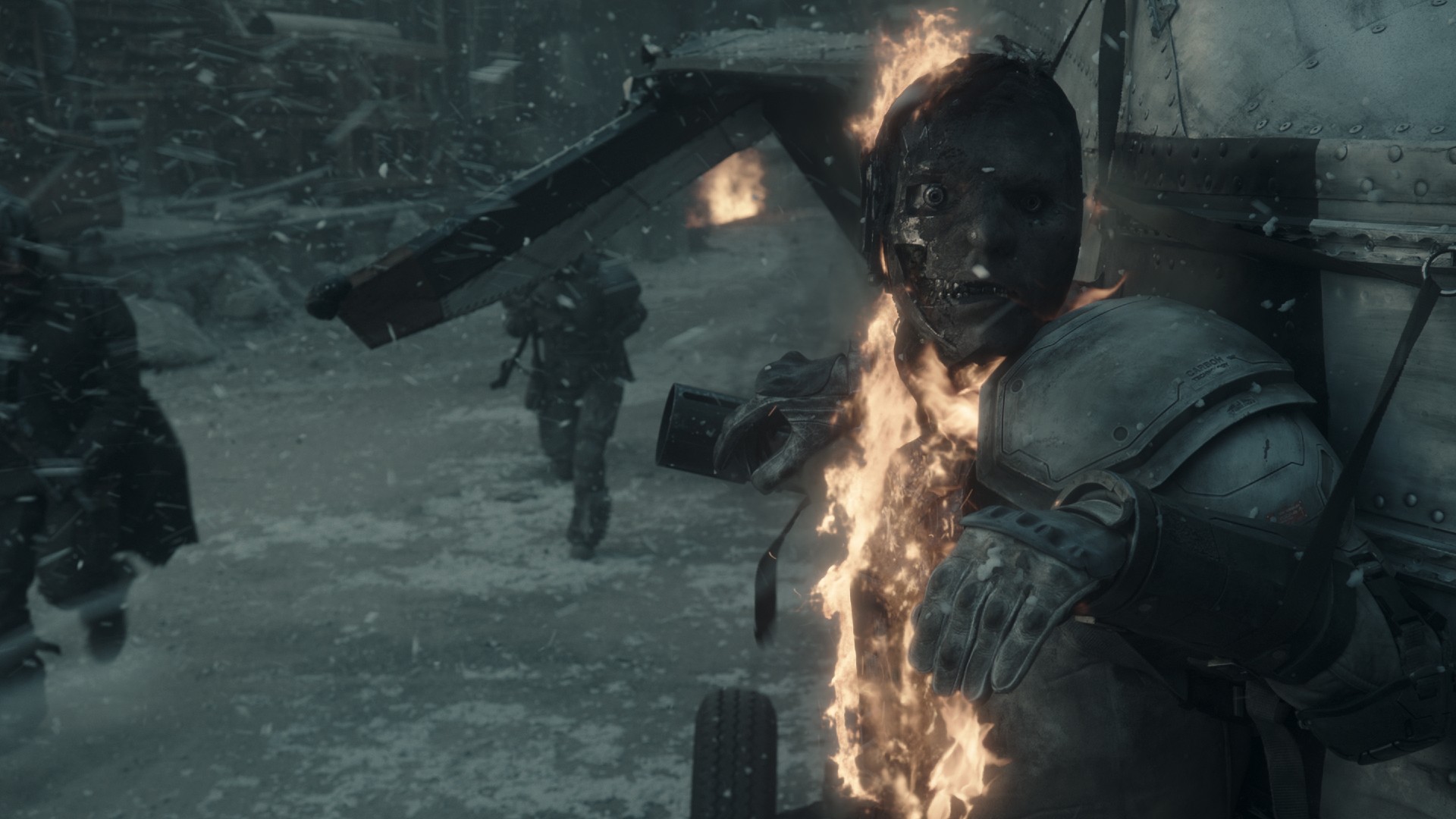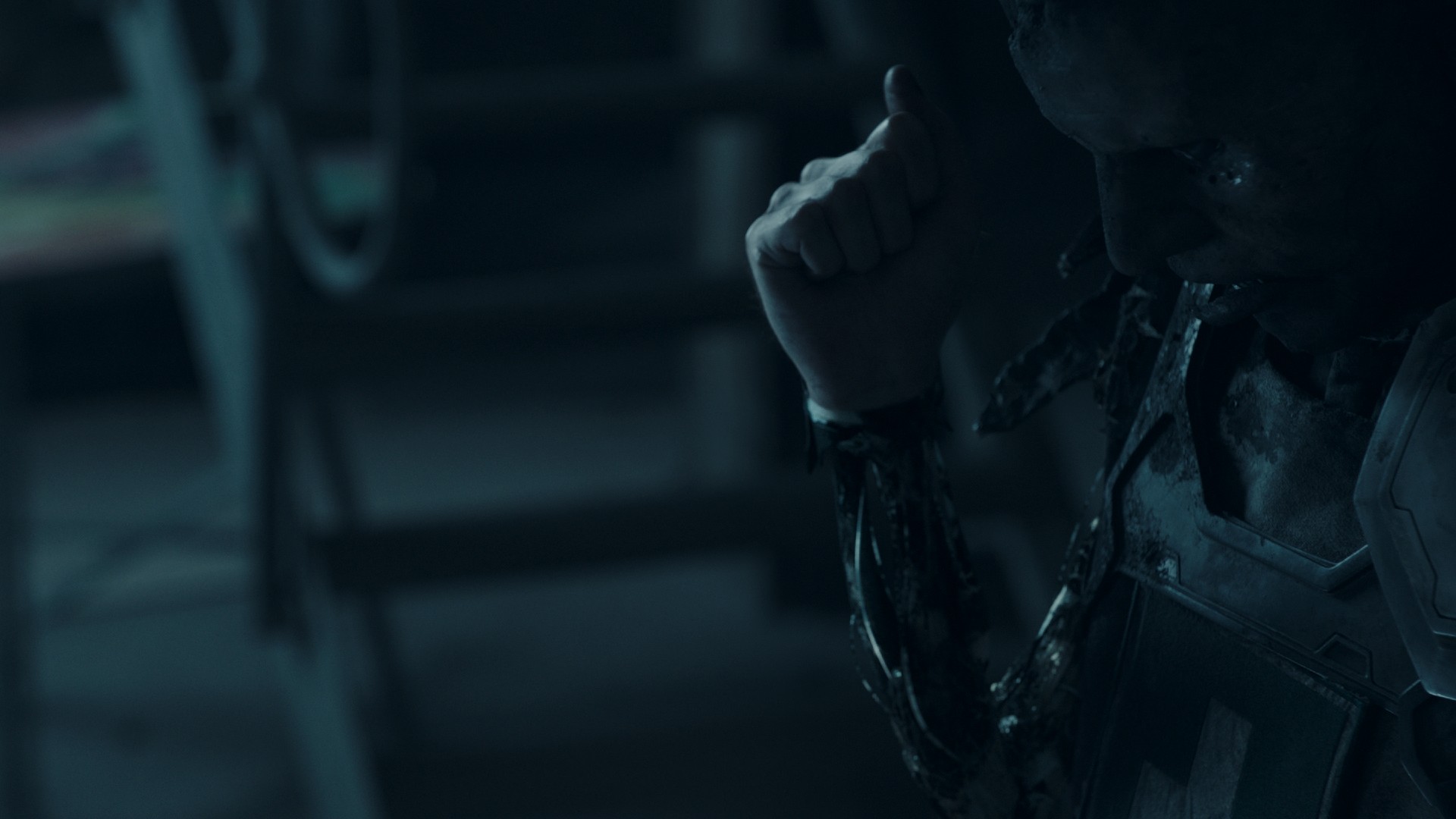HBO Max series Raised By Wolves is one of the first big hits for the cable network’s streaming service. It’s set in a far-flung future envisioned by sci-fi visionary Ridley Scott (Alien, Blade Runner) and features a pair of androids attempting to raise a group of human children on a harsh, remote planet. Their efforts are complicated by the arrival of more human colonists, who bring with them the same religious differences that led to Earth’s destruction.
Created by Aaron Guzikowski, Raised By Wolves blends spectacular sci-fi elements with breathtaking environments — both on the surface of the planet and miles above it — as it follows the two androids, Mother and Father (portrayed Amanda Collin and Abubakar Salim, respectively), and a small group of human colonists led by Mithraic soldiers Marcus (Travis Fimmel) and Sue (Niamh Algar).

The series’ impressive visual effects were created by a talented team led by overall visual effects supervisor Ray McIntyre Jr. Emmy- and Oscar-winning international VFX studio Pixomondo was one of several studios contributing to the show’s visual magic. With Raised By Wolves now renewed for a second season, Pixomondo visual effects supervisors Boris Schmidt and Ed Hawkins spoke to Digital Trends about their work on the HBO Max series.
Digital Trends: What were some of the key elements from the series your team worked on?
Boris Schmidt: They gave us a big part of episodes 1 and 2 that I worked on, and then Ed took over and worked on the rest of the season. We did a lot of different things. We did a lot of set extension for the shots on the surface of the planet, Kepler-22b. We put a big mountain — we called it Olympus Mons — in the background, which was one part of the set extensions we put in. They had this interesting set in Cape Town, South Africa, and tried to shoot as much as possible in-camera.
We also worked on the Boston stadium scene, with all the people leaving Earth in a huge spaceship. In developing that ship, we got a pretty-fleshed out model from from the visual effects house Mr. X, and then added detail to it whenever the shot got close to it — paneling and stuff like that. The main goal for the spaceships in the series was to keep them sleek in their design. Ridley Scott wanted sleek and smooth surfaces for the spaceships, and it was a challenge to sell the massive scale of them without adding too much detail, in order to keep them sleek and smooth. Adding lights helped with the scale, among other touches.

Like so many other Ridley Scott sci-fi projects, the ships definitely have a signature look in Raised By Wolves.
Schmidt: They do. We did a one-off shot with Marcus’ ship — the lander that goes between the planet and the orbiting ark — that was an interesting one. I don’t know if this is true, but I heard the lander is based on the design of a shaver. I heard Ridley Scott had a shaver and looked at it and thought the shape would work well for a ship, so that’s where the basic design came from. I don’t know if that is true at all, but we ended up with a good-looking ship.
We also worked on the cloaking effect of Marcus’ lander — specifically, when Mother is decloaking the ship. We looked at the way camouflage works for chameleons or squid, but Ridley wanted something more simple. He wanted it to look almost like a digital wallpaper on the ship, which she would kind of wipe off in order to decloak it.
I’ve heard Ridley Scott is very hands-on when it comes to developing the look of the sci-fi worlds he creates. How active of a role did he play in the elements you worked on?
Hawkins: There was a massive amount of concept work that we got when we joined the show, including a sketchbook full of Ridley Scott’s sketches. Ray [McIntyre Jr.], the visual effects supervisor, had a pretty good idea of everything because he was working directly with Ridley. But they were always open to suggestions on certain shots. For example, we worked on some shots where Father has his hand opened up, with the skin peeled back to reveal the technology inside. We worked up a concept in 3D and did a number of versions of it, lighting up different parts and using different color palettes, got feedback from them, and then created animations based on that feedback. It was a really good process.

Schmidt: Some of the concept art from Ridley Scott was hand-drawn scribbles. He has a really good eye, obviously, but he can also draw really well. For example, in the scene when Mother is approaching the ark in space, and she’s disguised as Marcus, the scribbles he sent us look almost exactly like the finished shot. That applies to almost everything in the show, including the creatures. They just had a really good vision for everything.
You mentioned the creatures, which also have a very unique look. How did their appearance evolve?
Schmidt: It was interesting, because they started out as wolflike creatures. We took some concept images and props built for the creatures when we joined the show — real, physical models they used on set as placeholders — and we built upon those concepts. At the beginning, the creatures looked a little bit more like hyenas. They had fur and skin patches and patterns, almost like zebra, with black splotches. We went through a lot of design phases.
In the end, it came down to how well you could read the creatures and what they were doing. For example, in scenes where they were running in the desert, they have a similar skin tone as the surrounding area, so we had to put some layers of mud on them. That allowed us to play with their specularity and create areas where there are some reflections and some where they’re less reflective — where the mud has dried, for example — so we can read their actions and forms better on the screen. There was a lot of development like that in the beginning.
We also had to consider how they ran. They have very long limbs, so how can you make that creature run fast and look believable? We looked at a lot of animal reference — running cheetahs, running hyenas, and such — but we ended up using humans as a reference. We analyzed footage that we filmed of humans running on four limbs and sped it up, then made it more elegant-looking.
What’s the shot you’re most proud of in the series?
Hawkins: The one I’m most proud of was the face-cutting sequence with Marcus. We had a lot of fun on that. It was one of those sequences you go into wondering exactly how you’re going to do it. We prepped a lot of 3D effects and started to go one route with it, but then realized we had to do something completely different, because it was so close-up and the skin had to move around so much in the shot. So we worked out a method that let us track skin movement using smart vectors in conjunction with 3D effects, and then it was just a matter of getting as much realism as possible.
It was kind of invisible in the sense that I don’t think people knew how much work we did on it. He had some makeup that we had to clean up and blend with our CG parts, and I think that was such a fun thing to work on. It also got the best reaction from Ray, who told us we were sick for coming up with a shot like that.

The glory is in the gore sometimes …
Hawkins: Right? When I’m working with a group of artists, I think it’s important to allow them a bit of time with a shot. They want to own the shots, so I try to let them impress everyone. One of our junior artists was working on some of the face-cutting shots, and she added some some splatters and drips of blood we didn’t initially ask for — but after putting them in there, we were like, “Oh, yeah. That’s good! Let’s have a few more of those.” Those little details really sell the shot.
Is there a shot you’re particularly proud of, Boris? Maybe a scene people don’t realize is as VFX-reliant as it is?
Schmidt: The shot that comes to my mind for me is the scene with the medical android. We had to augment his neck with underlying cables and such, and his arm was completely burned so you could see everything there. With those shots, you almost feel like there’s no CG — that it’s practical or mechanical. You don’t get thrown off by it. But the neckpiece and parts of his eyes are completely augmented with CG. When they find him in that scene, in the fire, it’s a practical piece with everything augmented by visual effects. I think it’s such a great shot.
Ridley Scott is such an iconic figure in the sci-fi genre. Did it feel like there was an additional layer of importance in getting this stuff right because, well … this is Ridley Scott?
Schmidt: Definitely. It was a huge honor for all of us to work on a Ridley Scott show.
Hawkins: It really is. I’ve worked on a couple of other shows he’s been involved with: [Exodus: Gods and Kings] and the film set during the Crusades, Kingdom of Heaven. Having watched his films and worked on some of them, this show felt kind of like I was working on ideas from his previous movies, which was great. The soldiers’ design [in Raised by Wolves] was based on soldiers of the Crusades, for example, and then you’ve also got these alien creatures, as well as the androids, too. So it was kind of like a tribute to some of his other films. I didn’t get to work on Alien, but I worked on this show, which had aliens and androids in it — so I had all of those experiences, which was nice.
The first season of Raised By Wolves is available on HBO Max now. The series has already been renewed for a second season.
Editors' Recommendations
- Building a better Predator: Behind the visual effects of Hulu’s horror hit Prey
- How visual effects made Manhattan a war zone in HBO’s DMZ
- How visual effects shaped Free Guy’s GTA-inspired world
- How The Matrix Resurrections used visual effects to plug in again
- How visual effects helped Tom Hanks’ robot costar come to life in Finch








